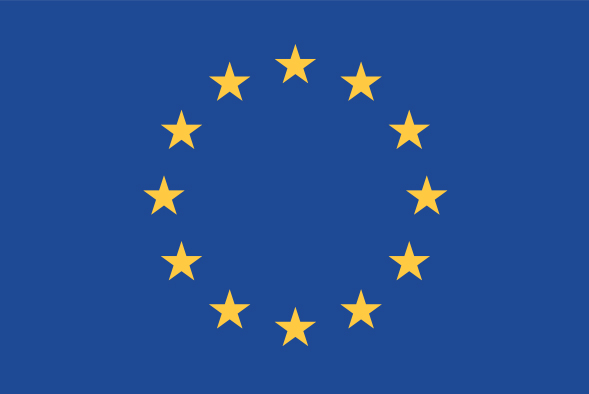
Gábor Egry, Director-General at the Institute of Political History and NEPOSTRANS project principal investigator continues to explain the intricacies of the Habsburg Empire
Nowhere. The Habsburg Empire had no economic empire comparable to the British or French which connected colonies with a metropolitan core, often walled-off with tariffs and depending on an uneven relationship that facilitated the flow of wealth and capital towards the centre. Austria-Hungary was a customs union of two equal states whose economic policies (taxes, investment, monopolies etc.) were independent, and the customs and monetary union (the common currency and central bank) was up for renewal every ten years.
Notwithstanding legal equality between Austria and Hungary the relationship between Vienna and Budapest was – in economic terms – asymmetric. Viennese banks, firms and capitalists could use their capital for investment in capita- stricken Hungary and the mainly agrarian Hungarian economy was the primary market for industrial Czech and Austrian industrial goods. Only around the turn of the century started to develop more equal relationships within this field, which was also instrumental for an effort to establish a different form of economic empire than the classic colonial type.
Stephen Gross labelled in his book ‘Export Empire’ similar German practices as liberal imperialism. Based on technological superiority, knowledge of the local circumstances and capital, German firms of all size established networks in Southeastern Europe to create export markets. It was, however, not an apolitical effort, rather an alternative to hard-core imperialism, bringing political influence alongside economic presence. In the regions where power slipped from the Ottoman Empire Austria-Hungary made similar attempts. Viennese, Budapest and Prague banks and industrial firms lent, invested and affiliated companies on the Balkans, with the aim of bringing the new states into the Habsburg Empire’s orbit, or at least counterbalance the influence of imperial rivals like Russia and France. Since 1878, Austria-Hungary had its foothold in Bosnia and Herzegovina too, which offered entanglements with Muslims of the Balkans.
Until 1914, at least the contours of an Austro-Hungarian liberal imperial economic space were ready. In Romania, Bulgaria, the Ottoman Empire banks acquired industrial enterprises, railway concessions, state monopolies and lent to governments. They did it with the help of local partners, whose knowledge was indispensable, even though the relationship was asymmetric. Capital from the Habsburg Empire was everywhere, active in textiles, sugar, forestry, oil, food processing and port services, and its local partners could grow and challenge their national competitors successfully.
After 1918 the successor states repudiated this economic legacy of the empire too – at least verbally. State-building programs promised the strengthening of national capitalists, creation of a national industrial base and legislation soon targeted foreign owners. So-called nationalisation – the setting of a compulsory quota for national shareholders and board members, more than 50% everywhere – aimed at quickly bringing these still Vienna or Budapest based/owned companies under Romanian, Czechoslovak, Yugoslav control. Given the fanfares and the seeming resolve of new national elites, the business empires once managed from Budapest and Vienna seemed to have been doomed.
But reality was – much like with laws, administration, culture etc., – different. The logic of business networks run often counter to the logic of state-building, and well-proven relationships remained often resilient in the face of political pressure. Cunning lawyers and seasoned managers came up with elaborate ownership schemes that successfully disguised continuing influence of the original owners, and subsidiaries and affiliated companies in the successor states were used to move around money in the successor states making it impossible to decide which owner was national, from a friendly state and from the defeated Austria and Hungary.
Key firms within the networks, residing in Budapest and Vienna still remained important for their extensive contacts in the world and ability to attract capital from the West. They were ready to alter the terms of cooperation, giving more say to their local partners, while especially in countries like Romania, they even sensed new opportunities. In this specific case, the Old Kingdom lacked an extensive heavy industrial base, but the national government wanted to quickly build up one, especially in strategic industries, like mining, steel and machinery.
Thus, the Budapest and Vienna owners teamed up with their well-known Romanian partners to provide the government with one: Based on joint ownership of the existing factories. Romanian partners facilitated political acceptance of the plans with the governments, fostered contacts with some key Romanian businesses and in these sectors soon huge conglomerates, monopolies or oligopolies emerged – with the original owners still holding a majority of shares or veto rights over key decisions, and contractually assured cooperation of Romanian and non-Romanian capitalist groups as regards to company management.
Such cooperation lasted surprisingly long. Throughout the 1920s these arrangements were only modified in financial terms when Romanians realised: They had taken a responsibility they did not have the means to fulfil. But they never tried to renege on promises, neither expropriate their non-Romanian partners. It was only after the Great Depression when more significant ownership changes occurred (although it was far from overall) – and its reason was not the intention to finally eliminate the Habsburg economic empire as such.
Monument of Austro Hungarian Empire King and Emperor Franz Joseph riding a horse, at Joseph square near Hofburg Palace, Vienna, Austria

NEPOSTRANS has received funding from the European Union’s HORIZON 2020 Research programme under the Grant Agreement no. 772264.
Please note: This is a commercial profile










